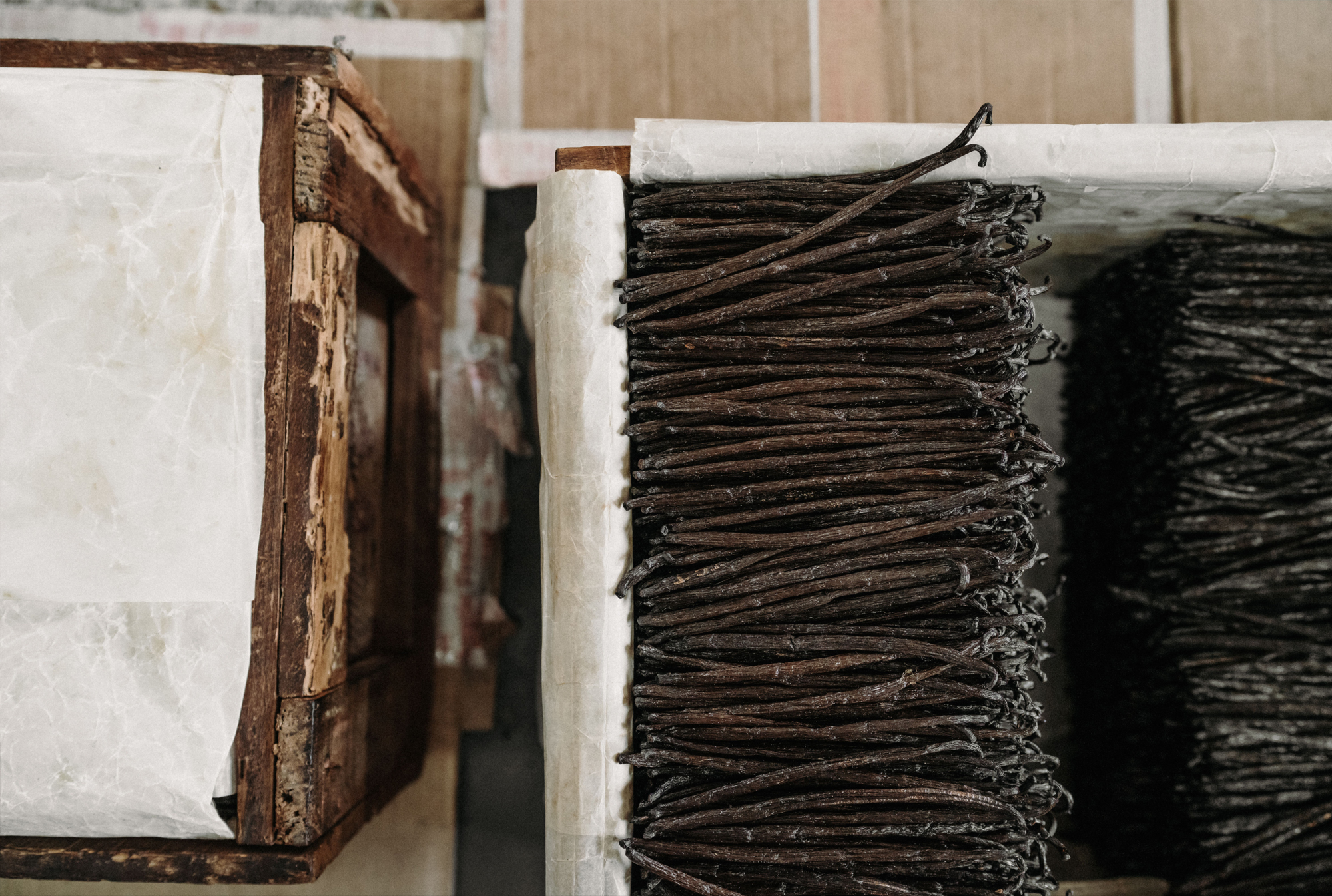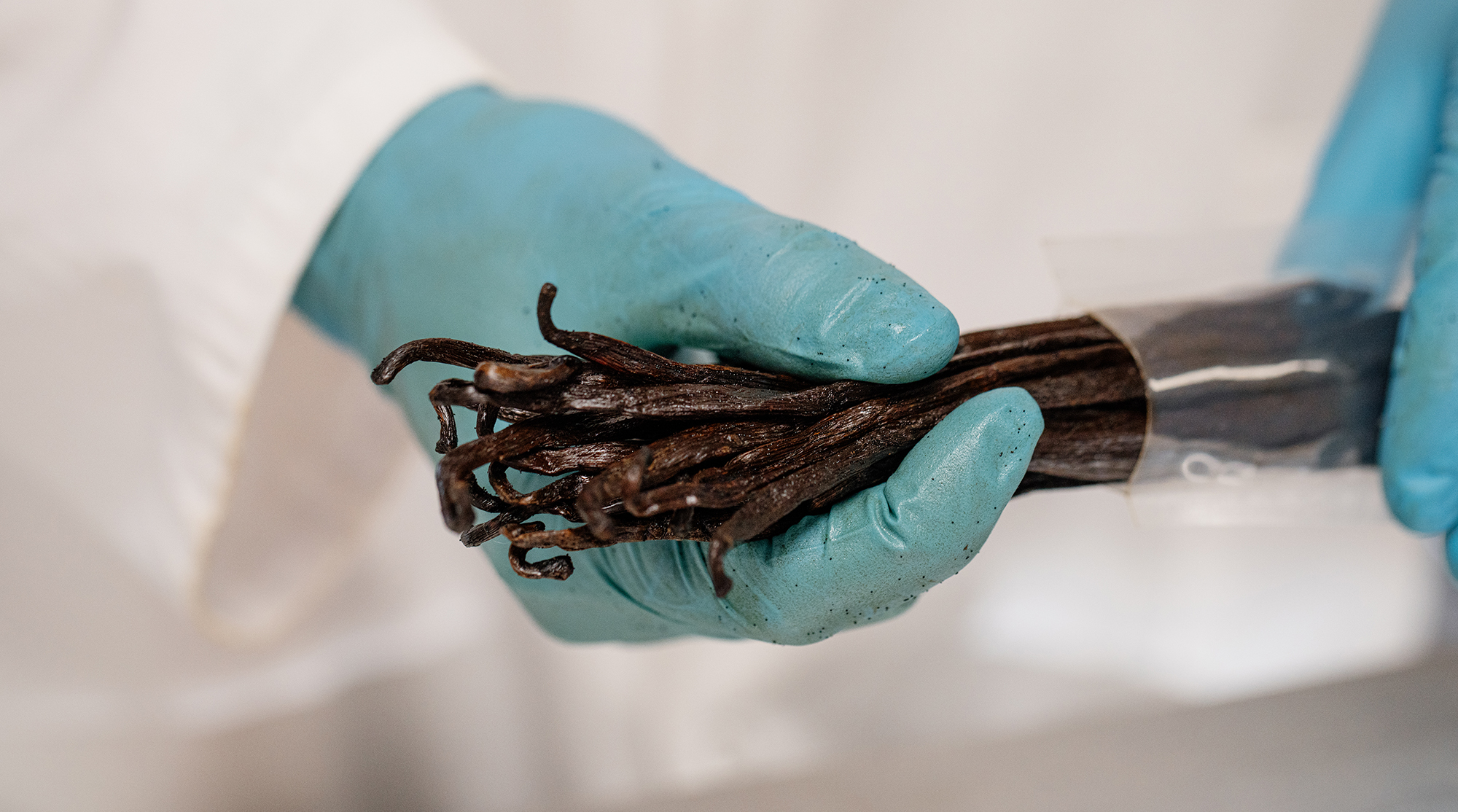VANILLA
AUTHENTIC PRODUCTS
VANILLA
EXPERTISE
We are experts in our field and master all the steps in the vanilla preparation process. This know-how allows us to enhance this spice and extract the best from it. Vanilla requires technical facilities suited to each stage of its preparation.


QUALITY
CONTROL
Authentic Products know-how is a guarantee of the final quality of the vanilla. This quality is guaranteed through inspection of the vanilla by recognized organizations (Ecocert, Flocert, Ecovadis) but also through internal checks throughout the traceability chain. A first check is carried out by our teams in Madagascar and then again on reception of the vanilla in France, with particular attention paid to microbial, chemical and physical hazards.

and is native to Central America.
It is essentially an undergrowth plant that needs
enough shade to avoid direct sunlight on the leaves and stems.
The flowers appear in clusters and are then pollinated manually
with a needle or thorn.
Vanilla requires a rich, well-drained soil to limit diseases
such as phytophtora and fusarium.
This step kills the vegetative tissue of the pods.
After 24 hours, the pods are more flexible and their color
is chocolate brown.
Scalding breaks down vanillin precursor molecules.
Sweating allows hydrolysis of glucovanillin
by glucosidases, transforming it into vanillin.
sun for 3 to 5 hours a day for about 10 days.
They are turned during this process,
so that they dry evenly. During sun drying,
part of the vanillin breaks down into different
constituents that contribute to the development
of the complex aromatic bouquet of vanilla.
ventilated warehouses.
They are turned and checked daily.
according to their moisture content,
color and quality. The more moist a vanilla, the darker,
suppler and fleshier it becomes.
Conversely, the drier the pod, the more
its color changes to reddish hues.
During this period, the aromas intensify and mature.
The pods are checked each week,
to rule out any potential defects.
They are then sorted again by quality,
measured and then grouped
into uniform bundles for sale.
